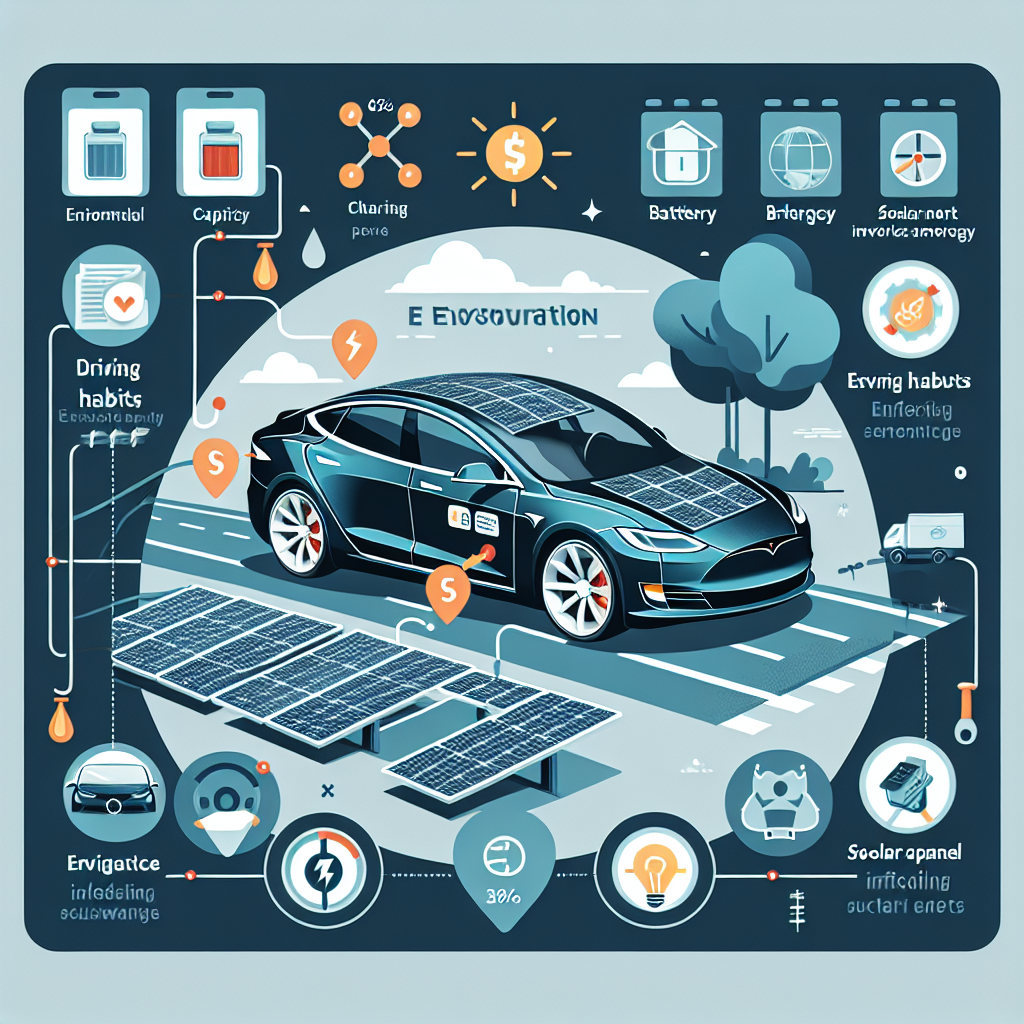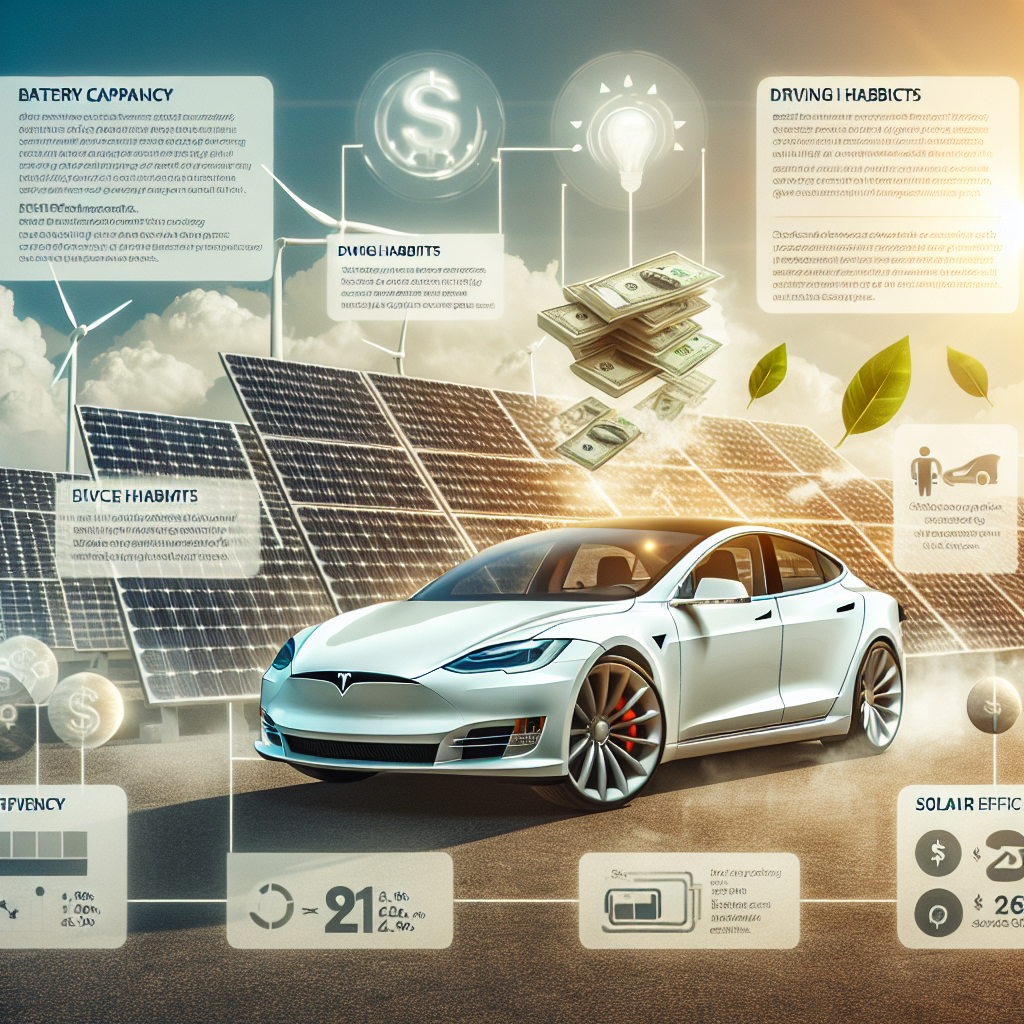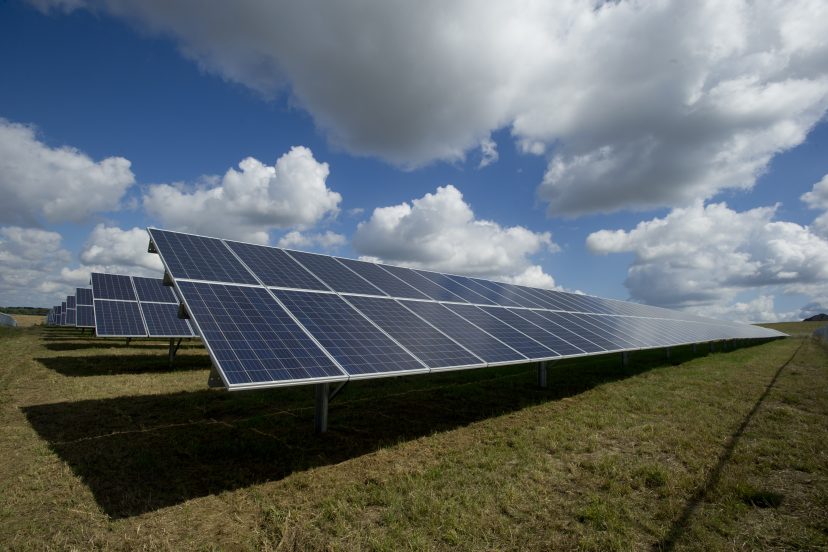How Many Solar Panels To Charge A Tesla
As an Amazon Associate, I earn from qualifying purchases, at no additional cost to you. Disclaimer
I’ve always been curious about how to maximize the use of renewable energy to power my Tesla car. So, I embarked on a journey to find out just how many solar panels it would take to charge a Tesla fully. From my extensive research, I discovered some surprising findings and calculations that could potentially revolutionize the way we think about sustainable transportation. So, fasten your seatbelts, because I’m about to reveal the answer to the age-old question: how many solar panels do you need to charge a Tesla?
Understanding the Basics of Solar Energy
What is Solar Energy?
Solar energy is a renewable form of energy that is harnessed from the sun’s rays. It is a clean and sustainable energy source that can be used to generate electricity. Solar energy has gained popularity in recent years due to its numerous benefits and potential to reduce our reliance on fossil fuels.
How do Solar Panels Work?
Solar panels are the devices that convert solar energy from the sun into electricity. They are made up of photovoltaic cells, which are composed of semiconductor materials that can absorb sunlight. When sunlight hits these cells, it excites the electrons in the material, creating an electric current. This current is then captured and converted into usable electricity, which can be used to power various devices and systems.
The Transformation of Solar Energy into Electric Power
Once the solar panels have converted solar energy into electricity, it needs to be transformed into a usable form. This is where solar inverters come into play. Solar inverters convert the direct current (DC) produced by the solar panels into alternating current (AC), which is the standard form of electricity used in homes and buildings. The AC electricity is then sent to a power distribution system, where it can be utilized by various appliances and systems.
Tesla Cars Overview
What is a Tesla Car?
A Tesla car is an electric vehicle manufactured by Tesla, Inc. It is known for its advanced technology, high performance, and eco-friendliness. Unlike traditional gasoline-powered cars, Tesla cars are powered by electricity, which is stored in a battery. Tesla cars have gained popularity due to their sleek designs, long range capabilities, and innovative features such as autopilot and over-the-air software updates.
Different models of Tesla Cars
Tesla offers a range of different car models, each catering to different needs and preferences. Some of the popular models include:
- Model S: This is Tesla’s flagship sedan model, known for its luxurious features, long-range capabilities, and high-performance options.
- Model 3: The Model 3 is a more affordable sedan model that has gained popularity due to its lower price point and impressive range.
- Model X: The Model X is a luxury SUV model that offers spaciousness, versatility, and advanced safety features.
- Model Y: The Model Y is a compact SUV model that combines the best features of the Model 3 and Model X, offering a comfortable and efficient driving experience.
Tesla Battery Specifications and Charging Requirements
One of the key components of a Tesla car is its battery. Tesla cars use lithium-ion batteries, which provide high energy density and long-lasting performance. The battery capacity and charging requirements vary depending on the model of the Tesla car.
For example, the Model S Long Range has a battery capacity of up to 100 kWh and can achieve a range of over 400 miles on a single charge. On the other hand, the Model 3 Standard Range Plus has a battery capacity of around 54 kWh and offers a range of approximately 263 miles.
When it comes to charging the Tesla cars, there are different options available. Tesla owners can charge their cars at home using a standard electrical outlet, but it can be a slow process. Faster charging options include installing a Tesla Wall Connector at home or utilizing Tesla’s Supercharger network, which provides high-speed charging at various locations.
Solar Panels for Electric Cars
Why Use Solar Panels to Charge Electric Cars?
Using solar panels to charge electric cars, such as Tesla cars, offers several advantages. First and foremost, it allows for clean and renewable energy to be used as a power source, reducing our dependency on fossil fuels and minimizing carbon emissions. Solar panels also provide the convenience of charging at home, eliminating the need to visit charging stations. Additionally, solar energy is essentially free once the initial investment is made in the solar panel system, resulting in long-term cost savings.
Benefits of Using Solar Energy for Tesla Cars
There are numerous benefits of using solar energy for charging Tesla cars. Firstly, it reduces the environmental impact of the car, as solar energy is clean and renewable. By utilizing solar power, Tesla owners can significantly reduce their carbon footprint and contribute to a more sustainable future. Solar energy is also abundant and available in most areas, providing a consistent and reliable source of power for charging the car.
Furthermore, using solar energy for charging can result in significant cost savings. Depending on the location and energy consumption, solar panels can generate enough electricity to cover the charging needs of a Tesla car. This can lead to reduced electricity bills and long-term savings on fuel costs.
Challenges of Using Solar Energy for Tesla Cars
While there are many benefits to using solar energy for charging Tesla cars, there are also certain challenges to consider. Firstly, the initial cost of installing a solar panel system can be a significant investment. However, it is important to consider the long-term savings and potential financial incentives available for using solar energy.
Another challenge is the variability of solar power generation. Solar energy production is dependent on the amount of sunlight available, which can vary daily and seasonally. This means that on cloudy or rainy days, the solar panel system may not generate enough electricity to fully charge the car. However, this can be mitigated by properly estimating the number of solar panels needed and considering other charging options such as utilizing the electric grid or Tesla Supercharger network.
Calculating the Number of Solar Panels Needed
Understanding the Solar Panel’s Power Output
The power output of a solar panel is measured in watts (W) and is an important factor in determining the number of panels needed to charge a Tesla car. The power output of a solar panel can vary depending on its size, efficiency, and the amount of sunlight it receives.
To calculate the number of solar panels needed, you first need to determine the energy consumption of the Tesla car and the daily sunshine hours in your area.
Estimating Daily Energy Consumption of a Tesla Car
The energy consumption of a Tesla car can vary depending on the model, driving behavior, and environmental factors. Tesla provides estimated energy consumption figures for each model, which can be used as a reference. For example, a Model 3 Long Range might consume approximately 27 kWh of electricity to travel 100 miles.
To estimate the daily energy consumption, determine the average daily mileage and use the energy consumption figure provided by Tesla. Multiply the energy consumption figure by the average daily mileage to get the estimated daily energy consumption.
Calculating the Number of Hours of Sunshine
The next step is to determine the number of hours of sunshine your area receives on average. This information can be obtained from local climate data or online resources. Multiply the number of hours of sunshine by the power output of a solar panel to determine the energy generated by one panel in a day.
To calculate the number of solar panels needed, divide the estimated daily energy consumption of the Tesla car by the energy generated by one solar panel. This will give you the approximate number of solar panels needed to charge the car.
Factors Influencing the Number of Solar Panels Needed
Geographical Location and Amount of Sunlight
The geographical location plays a crucial role in determining the number of solar panels needed. Areas with more sunshine and longer daylight hours will require fewer solar panels compared to areas with less sunlight. It is important to consider the climate and weather patterns of your area when estimating the solar panel requirements for charging a Tesla car.
Type and Efficiency of Solar Panels
The type and efficiency of solar panels also impact the number of panels needed. There are different types of solar panels available, including monocrystalline, polycrystalline, and thin-film panels. Monocrystalline panels are known for their higher efficiency, while thin-film panels have lower efficiency but can be more flexible and lightweight.
Efficiency refers to the amount of sunlight converted into electricity by the solar panel. Higher efficiency panels require fewer units to generate the same amount of energy, which can result in cost savings and less space required for installation.
Tesla Model and Battery Size
The Tesla model and battery size also influence the number of solar panels needed. Models with larger battery capacities will require more energy to charge and therefore may require additional solar panels. Additionally, different Tesla models have varying energy consumption rates, so it is important to consider the specific requirements of the model you own or plan to purchase.
Types of Solar Panels Suitable for Charging a Tesla
Monocrystalline Solar Panels
Monocrystalline solar panels are made from a single crystal structure, which gives them a uniform and sleek appearance. They are known for their high efficiency and perform well in both hot and cold climates. Monocrystalline panels are often considered the premium option but can also be more expensive compared to other types.
Polycrystalline Solar Panels
Polycrystalline solar panels are made up of multiple crystals, resulting in a more textured and mottled appearance. They have slightly lower efficiency compared to monocrystalline panels but are generally more affordable. Polycrystalline panels perform well in moderate to high-temperature environments and are suitable for residential and commercial installations.
Thin-film Solar Panels
Thin-film solar panels are made by depositing a thin layer of semiconductor material onto a substrate, such as glass or metal. They have lower efficiency compared to crystalline panels but can be more flexible and lightweight. Thin-film panels are suitable for installations where weight and flexibility are important factors, such as on curved surfaces or in portable solar systems.
Solar Power System Setup for a Tesla Car
Components of a Solar Power System
A solar power system for charging a Tesla car consists of several components. These include:
- Solar Panels: The main component that captures and converts solar energy into electricity.
- Inverter: Converts the direct current (DC) electricity produced by solar panels into alternating current (AC) electricity.
- Charge Controller: Regulates the charging process, ensuring the battery receives the appropriate amount of energy.
- Battery Storage (Optional): Stores excess energy generated by the solar panels for later use when the sun is not shining.
- Electrical Wiring and Breakers: Connects the solar panels, inverter, charge controller, and battery to form a complete system.
Installing the Solar Power System
The installation process for a solar power system can vary depending on factors such as roof type, available space, and local regulations. It is recommended to consult with a professional solar installer to ensure a proper and safe installation.
The solar panels are typically mounted on the roof or ground, tilted at an angle to maximize sunlight exposure. The panels should be oriented towards the sun to capture the maximum amount of sunlight throughout the day.
The components, including the inverter, charge controller, and battery (if applicable), are connected using electrical wiring. It is important to follow the manufacturer’s instructions and local electrical codes during the installation process.
Connecting the Solar Power System to a Tesla Car
To connect the solar power system to a Tesla car, a charging station or outlet is required. Many Tesla owners choose to install a Tesla Wall Connector or Wall Connector with a NEMA 14-50 adapter for convenient and faster charging at home. The Tesla Wall Connector can be connected to the solar power system using the electrical wiring and provides a dedicated charging solution for the car.
It is important to consult an electrician or a Tesla-certified installer to ensure a safe and proper connection between the solar power system and the Tesla car.
Maintenance and Efficiency of Solar Panels
Predicting Solar Panel Degradation Over Time
Solar panels are designed to be durable and require minimal maintenance. However, it is important to monitor and maintain the panels to ensure optimal performance and efficiency.
Over time, solar panels may experience a slight decrease in efficiency due to factors such as dust accumulation, shading, and natural wear and tear. Manufacturers often provide warranties and power output guarantees for a certain period to ensure the performance and reliability of the panels.
Best Practices for Maintaining Solar Panels
To maintain the efficiency of solar panels, it is recommended to follow these best practices:
- Regular Cleaning: Periodically clean the panels to remove dust, debris, and dirt that may accumulate on the surface.
- Shading Mitigation: Ensure that the solar panels are not shaded by nearby structures, trees, or other objects that can reduce their exposure to sunlight.
- Monitoring and Inspection: Regularly monitor the performance of the solar panels and inspect for any signs of damage or abnormalities.
- Professional Maintenance: Consider hiring a professional for periodic maintenance and inspection to ensure proper functioning of the solar panels.
Techniques to Increase Solar Panel Efficiency
There are several techniques that can be employed to increase the efficiency and performance of solar panels:
- Tilt and Orientation: Adjust the tilt and orientation of the panels to maximize exposure to the sun.
- Tracking Systems: Install tracking systems that allow the panels to follow the movement of the sun, optimizing sunlight capture.
- Shade Management: Utilize shading analysis tools to identify and mitigate any shading issues that may impact panel performance.
- Panel Cleaning Systems: Install automated or self-cleaning systems that remove dirt and debris from the panels, ensuring optimal sunlight absorption.

Environmental and Financial Impacts
Reducing Carbon Footprint with Solar Energy
One of the major environmental benefits of utilizing solar energy to charge Tesla cars is the significant reduction in carbon footprint. By reducing reliance on fossil fuels and utilizing clean and renewable solar energy, Tesla owners can contribute to the fight against climate change and air pollution. The use of solar energy also helps conserve natural resources and protects ecosystems from the harmful impacts of traditional energy generation.
Cost Analysis: Solar Power vs Grid Power for a Tesla
When it comes to cost analysis, utilizing solar power to charge a Tesla car can result in long-term savings. Solar energy is essentially free once the initial investment in the solar panel system is made. Over time, the electricity savings from not relying on the grid can offset the initial cost of installation. Additionally, considering the potential increase in electricity costs in the future, solar power can provide a stable and predictable source of energy.
Financial Incentives and Tax Credits for Using Solar Energy
There are various financial incentives and tax credits available to encourage the adoption of solar energy. These incentives can vary depending on the location and government policies. Some common incentives include federal tax credits, state and local rebates, and net metering programs. It is important to research and consult with local authorities or solar professionals to explore the available financial incentives and eligibility criteria.
Real-World Examples and Case Studies
Case Study of Solar Power System for Tesla Cars
There are numerous real-world examples and case studies of individuals and businesses utilizing solar power systems to charge their Tesla cars. These case studies provide insights into the practical implementation, benefits, and challenges of integrating solar energy and electric vehicles. They showcase the potential of solar power in reducing carbon emissions, lowering electricity costs, and creating a sustainable energy ecosystem.
Interviews with Tesla Owners Using Solar Power
Interviews with Tesla owners who have adopted solar power can provide valuable firsthand experiences and perspectives. These interviews can shed light on the practical aspects of charging Tesla cars with solar energy, such as installation process, performance, cost savings, and overall satisfaction. Personal experiences from Tesla owners can help prospective users make informed decisions and better understand the potential benefits and considerations related to solar-powered Teslas.
Expert Opinions and Predictions for Solar-Powered Teslas
Experts in the field of renewable energy, electric vehicles, and sustainable transportation can provide valuable insights and predictions regarding the future of solar-powered Teslas. Their expertise and analysis can shed light on the potential growth of solar energy adoption, advancements in technology, and the role of solar-powered Teslas in achieving a sustainable and carbon-neutral future. Expert opinions can help individuals and businesses make informed decisions and stay up-to-date with the latest developments in the field.
In conclusion, understanding the basics of solar energy and its application in charging Tesla cars is essential for harnessing the power of the sun to drive towards a sustainable future. By utilizing solar panels, estimating energy consumption, considering geographical factors, and exploring the different types of panels, Tesla owners can make informed decisions about solar power systems. Through proper installation, maintenance, and monitoring, solar-powered Teslas can significantly reduce carbon footprints, save costs, and contribute to a cleaner and greener transportation ecosystem.


